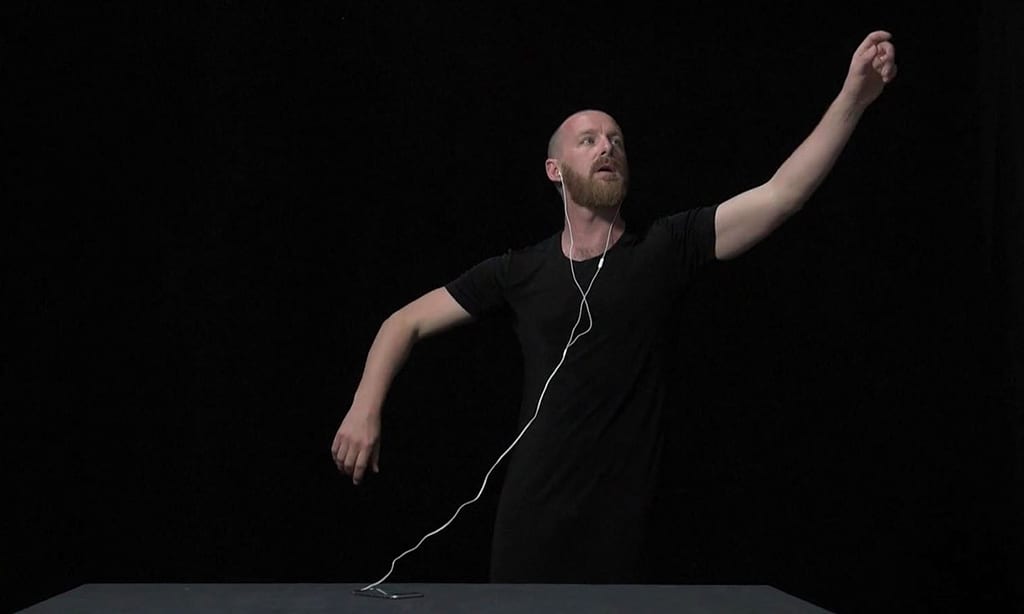Throughout last year the co-creators of this one-off screening have compiled 52 gestural video portraits of dancers or former dancers each running to a few minutes. The participants were asked to craft a balletic routine with a table and chair as a focal point, and this was then later overlaid with a specially designed soundtrack comprising a text drawn from their life stories intoned over a tune or song drawn from any genre of music. Some portraits were of couples or friends, and some sang or spoke their own texts. As Jonathan Burrows explained at the outset this was the first showing of all 52 together, though they are available on a website to be played in selection or in any order. The screening was a relaxed performance with the audience able to come and go during the two hours duration.
This seemed to be a rather random exercise at first, but as it proceeded the evening developed a cumulative power and intensity that impressed. Inevitably, some of these ‘portraits’ had more emotional and comic impact than others, but as the layers gently accumulated into a snow drift of human experience and witness channelled through significant movement, the audience’s concentration intensified rather than wavered until we reached the final portrait of three members of the creative team, recognising in the final fade that it could simply ‘go on and on…’
It works largely because the format offers a clear general framework while still retaining great scope for individual creativity in both dance expression and synergy between gesture, words and music. The portraits that worked best were those that somehow within brief compass managed to tell a life story, or encapsulate a mood or moment that sparked recognition in the experience of the audience. There were some general themes: that dance is never less than political; that is it personally liberating; that it can collapse the boundaries between the inside and outside of a personality and show that to an audience in an immediate way; that it can confer meaning and purpose on a troubled and confused life; that for those with a disability or the weaknesses of age it can still provide a unique discourse of emotional connection with a wider community. These are hardly new points to make, but to see them all made together so succinctly and variously was a quietly triumphant endorsement of the unique accessibility of dance in all its forms to the human psyche.
It was rather less clear that insisting on the presence of a table in each portrait was a helpful convention: yes, it gave a focus and a support to those seeking inspiration and ideas for their self-presentations, but it also imposed limitations – a sense of being tied to a desk – which meant that for the most part the performers were restricted to the use of their upper bodies alone. With so much sculptural shaping with hands and shoulders, there was an unnecessary element of restriction and repetition imposed on some of the dancers, and therefore a welcome relief when some stood up and performed with their whole bodies.
This is a winning formula in its supple simplicity, and it is to be hoped that it may be continued in a variety of ways: we all have hymns and threnodies of movement within us and capturing different groups of people responding in this way to the themes of their lives and to the opportunity of linkage with apt words and music offers wonderful teaching and learning experiences, and endless chances to experiment with the kaleidoscopic possibilities involved in pairing physical movement with the suggestive power of words and music.
Go straight to the website and see for yourselves!




